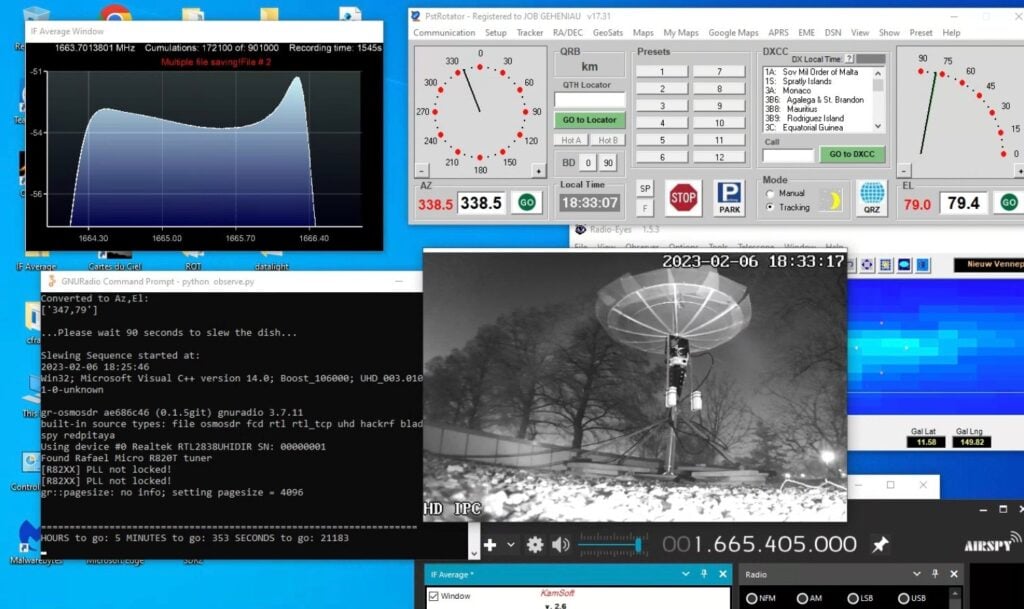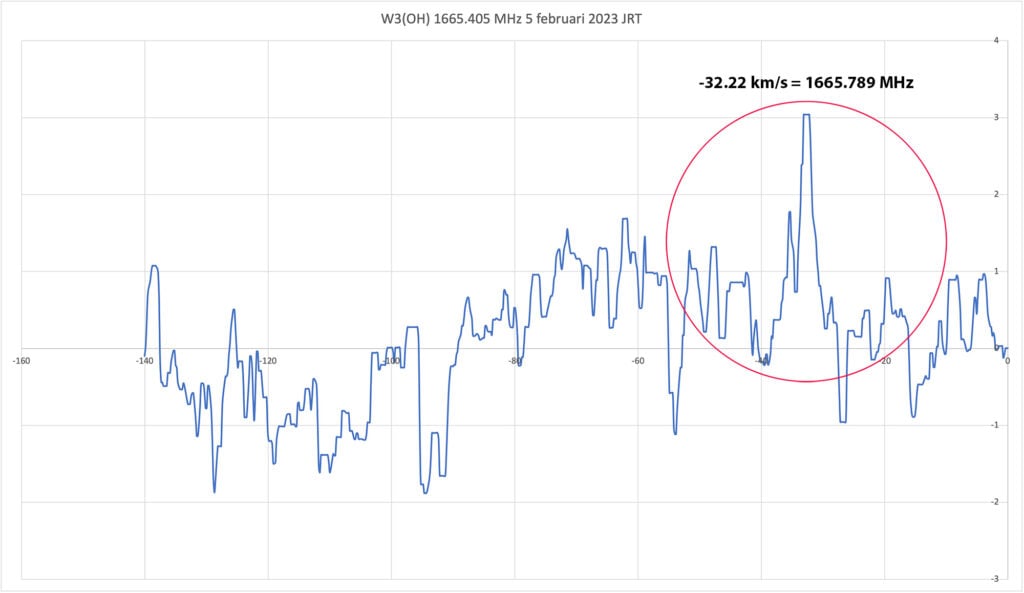Over the past few years we've seen a lot of interesting observations coming from Job's Radio Telescope, which is Job Geheniau's 1.5m dish connected to an RTL-SDR (with additional filters and LNAs). He has done things like mapped the galaxy via the Hydrogen line, observed red supergiant stars, imaged a supernova remnant, detected a Pulsar, and measured the basis for the dark matter hypothesis.
In his most recent work Job has managed to detect the W3 star forming region at the Hydroxyl (OH) frequency of 1665.405 MHz.
W3 is an enormous stellar nursery about 6200 light-years away in the Perseus Arm, one of the Milky Way galaxy's main spiral arms, that hosts both low- and high-mass star formation. - Source
Hydroxyl (OH) can be observed both in emission and absorption. Emission frequently manifests itself as maser emission which is of specific interest. Energy Levels of OH Diatomic molecules like OH have numerous energy levels as they not only have electronically excited levels, but they can also vibrate and rotate. Both rotation and vibration are quantized and give rise to the large number of levels. Because of the wealth of energy levels, OH can be observed at various wavelength in the optical, infrared and radio regime. - Source
Over on the RTL-SDR Facebook group (not affiliated with this blog), Job has described his experiment in more detail (link requires a Facebook account and membership). He writes:
As you may know or not...., I have been busy the last few weeks trying to detect maser W3(OH) with my 1.5-1.9 dish. The W3 complex lies in a darkened part of the Perseus galactic arm, at a distance of ∼2.2 kpc, and is one of the most intensively studied star-forming regions in the Milky Way Galaxy. Quite a challenge! It looks like I have a hit now after all.
Adjusting the Feed, calibrating the position of the dish and a lot of trial and error and a lot of patience seem to be leading to a result after all.... For now, I will keep this as my W3(OH) registration at 1665.405 MHz. Taking into account the Vlsr of currently 17 km/s (speed of earth and rotation around the sun), the final result comes close to the correct measurement. 1665.789 MHz = -32.22 km/s. Vlsr according to my calculations in terms of location and time is 17 km/s. -32-17=49 km/s. I think and hope that -49 km/s is the correct velocity of W3(OH) also considering the reasonably clear peak in the measured values in the graph.
These W3(OH) results were done with a special 1665 bandpass filter and 2 mini circuits lna/s. I will keep measuring for a while in the coming days, but soon I will switch back to another Feed over, namely the now under construction 611 MHz Feed with associated bandpass filter to once again 'capture' pulsar B0329+54. My ultimate goal with this dish!
I was very close last six months, but after extensive research with fellow radio amateurs we unfortunately could not confirm with 100% (!) certainty that the pulsar was detected at 1420 MHz with the 1.9 dish.
Also that research continues with longer exposure times and now research at 611 MHz, there is still some soldering and drilling and sawing to be done..... But first things first. Glad with this result anyway. Takes a lot of perseverance and patience.


